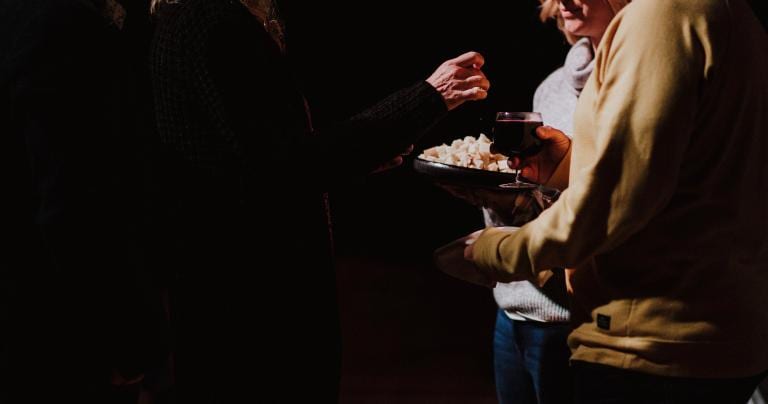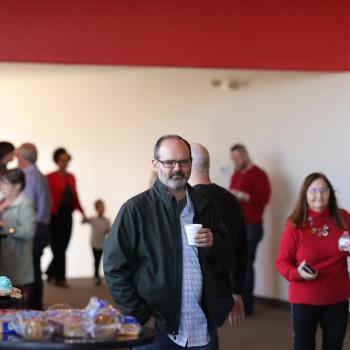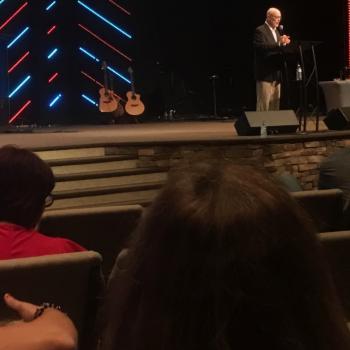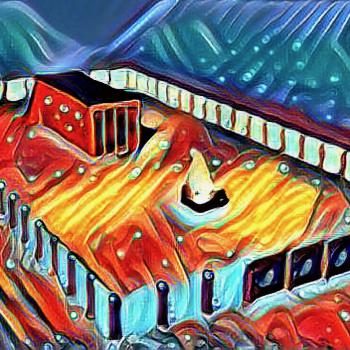Early Influences, Early Church Liturgy

We know the church of Acts practices communion.
“1 Cor. expresses that tradition in a more primitive form [than Mark], roughly at the stage when S Paul first learned it – within ten years at the most of the last supper itself, perhaps within five.”[1]
chaburah, agape, and table fellowship meals
Paul’s form of communion would be recognized by the Jewish Christians as a new meaning to a chaburah meal. Earle Cairns explains the typical Sunday worship in those early days.
During the first century, two services were held on the first day of the week . . . The morning service most likely included the reading of Scripture (Col. 3:16), exhortation by the leading elder, prayers, and singing (Eph. 5:19). The love feast (1 Cor. 11:20-22), or agape [chaburah] preceded the Communion during the evening service. By the end of the first century the love feast was generally dropped and the Communion celebrated during the morning service of worship.[2]
Apart from the chaburah, agape, or what Irvin and Sunquist call table fellowship:
“followers of Jesus from the earliest days of the movement in Jerusalem gathered regularly for a special meal known as a eucharist (‘thanksgiving’). The elements at this meal were simply bread and wine. With them, believers remembered and proclaimed the death and resurrection of Jesus Christ.”[3]
Dom Gregory Dix explains the early understanding of the liturgy within the primitive church, using the four-action shape (offertory, prayer, fraction, communion). Since we see within the chaburah primarily prayers of thanksgiving, it is understandable that the same theme is followed in the Eucharist. The laity provide the elements, along with other types of food and offerings, as the offertory.[4] They each bring a little bread and wine.[5] This is important because the Eucharist is seen as a true offering. Hugh Wybrew states that in the Orthodox Church the people still bring a small loaf, a prosphora (offering) to present at the north door of the iconoscreen.[6]
berakah
The Eucharist prayer is based on the berakah.
“There were thus available two Greek words to translate the one Hebrew word berakah: eulogia = a ‘blessing’, or eucharistia = a ‘thanksgiving’ . . . S. Paul tends to use eucharistein rather than eulogein.”[7]
Dix discusses the content of the Jewish berakah. The early communion prayers follow a similar theme. The berakah thanks God for Israel’s deliverance from Egypt, entrance into Canaan, establishment of the Covenant, and the food God provides. The church thanks God for the New Canaan, the New Covenant, communion like milk and honey, and deliverance from the devil and sin.[8]
Primitive prayers, like the berakah, “gave thanks for God’s mighty work in the creation and salvation of mankind.”[9] In a real sense, these are prayers of thanksgiving, seemingly far removed from the future developments of either the consecration or epiklesis. This is the one unifying prayer of the whole rite, so its importance cannot be overstated.[10] It seems to be in the simple form of, “thanksgiving and prayer to which the people responded by an ‘Amen.’”[11]
eschatology in communion
Robert Webber says the primitive church also sees an eschatological fulfillment in the rite.
“In the early church, the central meaning of the Eucharist was to give thanks for the living, dying, and rising again of Jesus, looking forward to the coming again of Christ to establish his kingdom.”[12]
This is congruent with the Synoptic accounts (Matthew 26.29; Mark 14.25; Luke 22.18) and Paul’s concluding remark, “until he comes” (1 Corinthians 11.26, NRSV).
For more on Communion in the Early Church from the Archives CLICK
notes:
- Dom Gregory Dix, The Shape of the Liturgy, 3rd ed. (London: Bloomsbury T&T Clark, 2015), 64.
- Earle E. Cairns, Christianity Through the Centuries, 2nd ed. (Grand Rapids, MI: Academie Books, 1981), 83.
- Dale T. Irvin and Scott W. Sunquist, History of the World Christian Movement, Volume I: Earliest Christianity to 1453 (Maryknoll, NY: Orbis Books, 2009), 29.
- Dix, 78.
- Ibid., 104.
- Hugh Wybrew, The Orthodox Liturgy: The Development of the Eucharistic Liturgy in the Byzantine Rite (1989; repr. London: Society for Promoting Christian Knowledge, 2013), 4.
- Dix, 79.
- Ibid., 80.
- Wybrew, 17.
- Dix, 81.
- Cairns, 83.
- Robert E. Webber, Ancient-Future Faith: Rethinking Evangelicalism for a Postmodern World (Grand Rapids, MI: Baker Books, 2004), 110.












